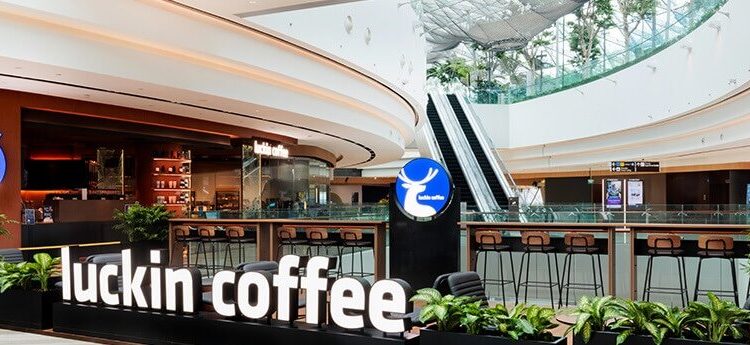Why Western Brands Are Struggling To Gain Ground In China's Rapidly Evolving Coffee Scene – CoffeeTalk
Luckin Coffee, a Chinese coffee brand, has managed to double its footprint in a single year and opened its 20,000th store in China. Meanwhile, Starbucks, a global coffee giant, is searching for a strategic partner to help navigate the market. The Chinese coffee industry is being rewritten by local players, and western chains can’t keep up. Starbucks added 522 stores in China last quarter, with 8% revenue growth and a 2% uptick in comparable store sales. However, average transaction values are down, and Starbucks’ market share has plummeted from a peak of 42% in 2017 to just 14% in 2024.
Chinese coffee brands like Luckin and Cotti have mastered ecommerce, livestreaming, and short videos to drive both visibility and conversion. They have quickly utilised ecommerce platforms, live streaming, and short videos to enhance product promotion and engage with customers, greatly improving both brand visibility and sales conversion rates. Local chains operate on platforms like Taobao, JD, and Douyin, providing a range of digital offerings, including discount coupons, redemption vouchers, and multi-use passes. Additionally, they are effectively utilising live commerce and group buying features to increase sales.
Localisation isn’t optional, as cultural fluency is the key engine behind the progress of Chinese coffee chains and has also hindered the growth of global brands in China. Local brands have a better understanding of local taste trends, creating a highly localised coffee culture. The rise of “IP collaboration marketing” where local chains partner with pop culture icons, streetwear labels, and even video games has led to 33% of consumers increasing their speciality coffee purchases due to brand collaborations.
Western coffee giants still love to talk about their “third place” ethos and global heritage, but what actually moves the needle in China is speed, novelty, and price. Starbucks needs a “youth-led reboot” that involves rethinking formats, collaborating with influencers, and going TikTok-native, especially in Tier 1 and Tier 2 cities. Younger Chinese consumers are not sentimental about old-school brands or store design, and they expect a steady stream of fresh, culturally attuned product drops.
Market saturation is now a real issue, with coffee shops crowding every corner in top cities. Good distribution isn’t enough anymore, and you have to keep evolving to stay relevant.
To succeed in China, global chains need to rethink their business model and local strategy to appeal to changing consumer needs. By revitalizing their menu with innovative local flavors, fostering strategic partnerships with local players, and enhancing the customer experience, they can succeed. According to research, among China’s top 10 coffee chains, six are local and outpacing internationals in store growth. Aggressive pricing is only part of the story; 47% of consumers say regular new product launches drive repeat purchases. Chinese brands are constantly dropping seasonal specials with local ingredients, herbs, and superfoods, and an industry-leading refresh rate keeps customers coming back. More than half of Chinese consumers now say they’ll stick with brands that share their values.
Branding’s future isn’t about being the strongest; it’s about being authentic, relatable, and emotionally resonant. For western brands, this is a massive opportunity only if they can pivot fast enough. While price matters, flavor and aroma top the list for speciality coffee drinkers. Experience counts: 49% of ready-to-drink coffee buyers say they’ll return for comfort and professional service.
Without a complete reset, western chains risk falling into a “mid-market trap,” too pricey for value seekers and too boring for trendsetters. Harling warns that western chains should move on from “copy-and-export” to “co-create and localise.” Let local teams own product, marketing, and pricing, and move fast.
Blue Bottle Coffee, Lavazza, and KFC’s K-Coffee are some of the new contenders in the coffee space. Blue Bottle Coffee has positioned itself as more than just a café, emphasizing a curated brand experience and storytelling. Lavazza’s ambition to open 1,000 stores by 2025 is ambitious, but scaling that premium experience across China’s vast consumer landscape is never easy.
Read More @ Campaign
Source: Coffee Talk



